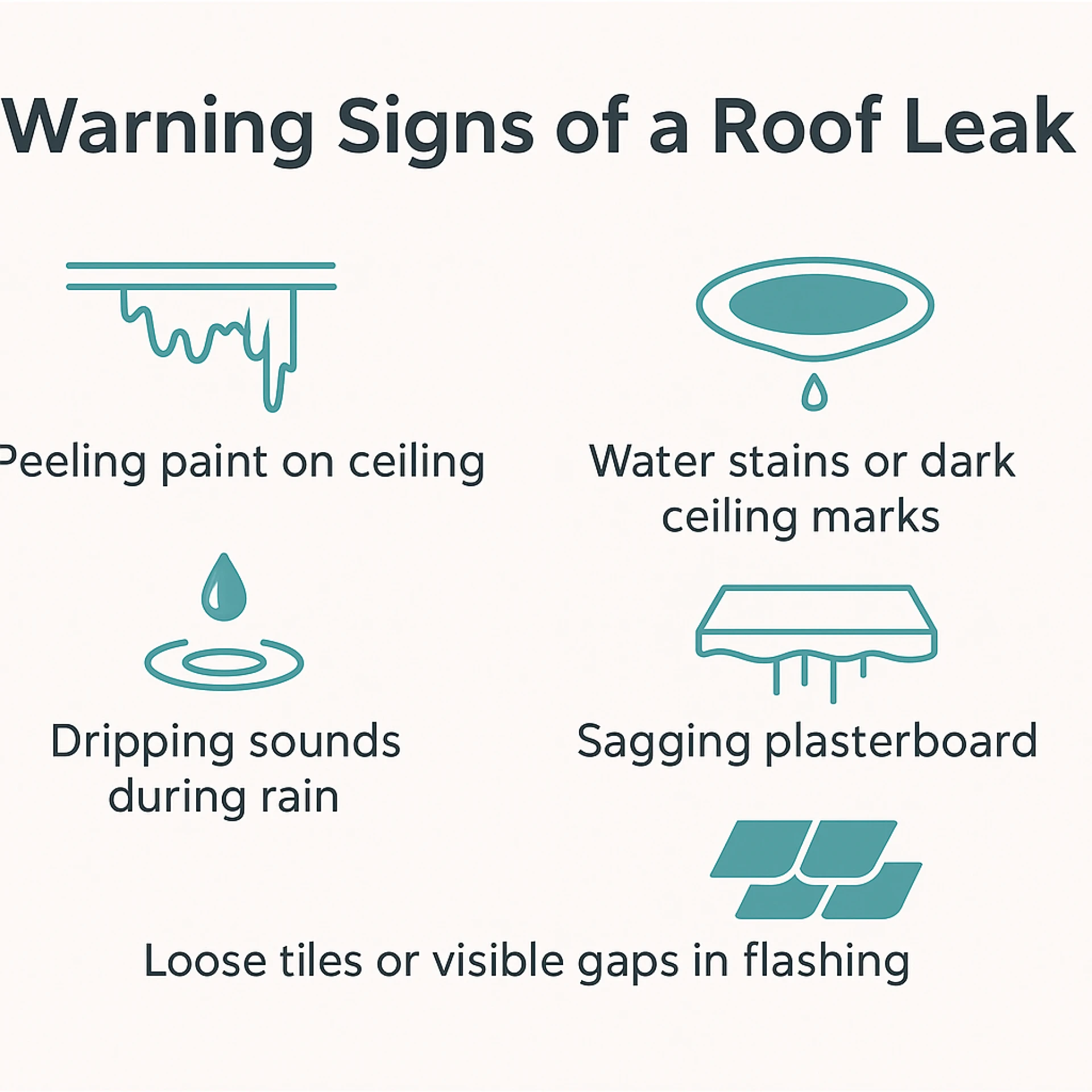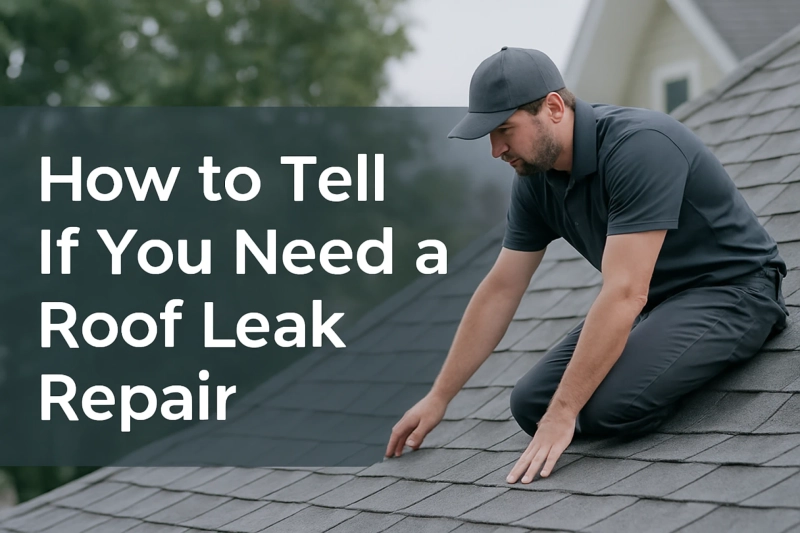Most of us don’t think much about the roof — not until something starts to go wrong. It sits up there, doing its job quietly, keeping the elements out. But when a leak appears, chances are the water’s been working its way in for a while.
The good news? Leaks rarely happen without warning. If you can spot these signs early, you’ve got a good chance of fixing the issue before it gets out of hand. This guide walks through what to look for and when to call in emergency roof leak repair before small problems become major damage.
Why early repairs make all the difference
Roof leaks don’t always show themselves with a big splash. Most start quietly — a bit of water slipping through cracked flashing, lifted tiles, or corroded screws. It might go unnoticed for weeks, even months, before signs show up indoors.
But just because you can’t see it doesn’t mean it’s not doing damage. Slow leaks can soak insulation, weaken timber, and create the perfect conditions for mould. Sorting it early often means a simple fix. Leave it too long, and you’re looking at far more than just a patch-up job.
Subtle signs your roof might be leaking
You don’t need to wait for water to drip onto your kitchen bench. Here are some quiet indicators that a roof leak could be brewing:
- Peeling or bubbling paint on ceilings or upper walls
- Dark stains or marks forming in corners or along the ceiling edges
- Unexplained musty smells in rooms closest to the roofline
- Spots of mould or mildew, especially after recent rain
- Loose roof tiles or lifted flashing visible from ground level
- Sagging sections in ceilings — a red flag that water is pooling above
If any of this sounds familiar, it’s best not to ignore it. A small leak today often leads to bigger structural issues tomorrow.

What causes roof leaks in the first place?
Leaks can be triggered by all kinds of roofing faults — some caused by weather, others by wear and tear. These are the most common culprits:
- Cracked or missing tiles/shingles
- Blocked or sagging gutters
- Improperly sealed flashing around vents or skylights
- Loose ridge caps or valleys
- Storm damage from hail, branches, or flying debris
- Old roofing membranes are breaking down beneath the surface
While some causes are visible from the ground, others need a professional eye. If you’re unsure, book an inspection and ask what’s driving the leak.
How the weather affects your roof’s weak points
In Australia, weather extremes can wear down even the most robust roofs. Heatwaves cause expansion and contraction in metal roofing, which loosens fasteners and widens joins. Winter rains push water into small openings. And hail? It doesn’t just dent — it cracks protective coatings and exposes metal.
After major weather events, always review the roof maintenance and repair tips to understand what to check and when to arrange professional help.
Is it a leak or something else?
Sometimes, what looks like a leak might be something else entirely — condensation, plumbing issues, or even a dodgy aircon unit dripping where it shouldn’t.
To help narrow it down, ask yourself:
- Does the stain appear only after rain?
- Is it near a vent, skylight, or chimney?
- Has the patch grown over time?
- Does the ceiling feel soft or damp?
Once you’ve ruled out other causes, it’s worth thinking through the bigger picture. Age, materials, and exposure all influence the potential cost of a fix. These kinds of roof repair cost considerations are helpful when deciding whether to patch a single area or address more widespread wear.
DIY patch jobs: helpful or harmful?
It’s tempting to slap a sealant over a leak and call it a day. And in some cases — like a visibly loose tile — that might buy you time. But most leaks run deeper than they look.
Temporary fixes might hold up in dry weather, but they usually fail under pressure. Worse, they can mask the real issue and delay a proper repair. That’s when the cost really adds up.
If you need to act fast before a contractor arrives, stick to non-invasive measures like placing buckets under leaks, removing valuables from risk areas, and documenting any roof damage.
Maintenance = prevention
Good roof maintenance doesn’t mean climbing up every weekend. It means keeping an eye out, scheduling regular inspections (at least annually), and acting when something doesn’t look right.
This approach helps you:
- Catch wear-and-tear before it leads to damage
- Extend the life of your current roof
- Avoid surprise costs or insurance complications
- Reduce long-term repairs and improve energy efficiency
For more preventative strategies, check out this guide on preventative roof maintenance methods, which outlines how simple seasonal habits can help your roof last longer.
When to call a roofer
If you're seeing water stains, hearing drips in the ceiling cavity, or noticing warping along your roofline, it's time. Don’t wait for your ceiling to collapse or for storm season to start.
The best time to call a roofer is when you suspect something’s off, not when it’s already too late. And if it turns out to be nothing? You’ve still gained peace of mind.
Even better, if you act fast, an emergency roof leak repair could be done the same day, saving your ceiling, insulation, and budget from more significant damage.
Final thoughts
Roof leaks are one of those problems that sneak up quietly but escalate quickly. What starts as a slow drip can end with cracked plaster, soaked insulation, and costly repairs. But if you know what to look for — and act early — you can avoid most of the mess.
Your roof’s doing the hard work every day. A little attention when it counts goes a long way.



